Terms and Definitions
Spot welding

To place overlapped base material between two electrodes whose tip being formatted properly, heats locally and presses a relatively small part of it by concentrating of current and welding pressure simultaneously.
Direct spot welding
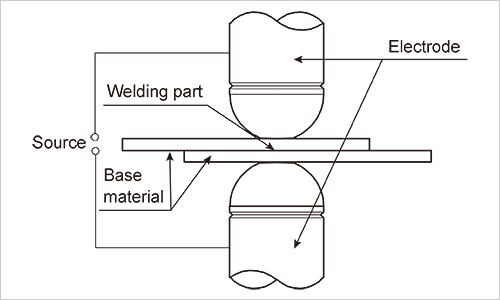
A welding joint is pressurized directly by an electrode, a welding current is passed in a plate thickness direction.
Single-phase AC resisance welding machine
AC resistance welding machine that uses a single-phase AC power of commercial frequency.
Inverter-controlled resistance welding machine
Resistance welding machine that controls frequency by using inverter (the device converts a commercial AC power supply into an AC power of different frequency).
Rectifier type resistance welding machine
This is a type of DC resistance welding machine. A rectifier inserted into asecondary circuit of a welding transformer converts AC power of single-phase of commercial frequency or three phases of commercial frequency into DC.
Duty cycle (of resistance welding machine)
Display the sum of the weld time during the measurement time by a percentage.
Note 1: If you apply a thermal time constants of a corresponding part to denominator, it can be obtained that whether or not a power source and accessories are usable without overheating. (Refer to JIS C 9305)
Note 2: Cycle time is the sum(in case of multiple-impulse welding, use each total sum value) of load time(weld time) and non-load time (down time) a currents.
Constant current control
Energization control system of main energizing circuit having automatic detecting and correcting function of the fluctuations of current of main circuit for each cycle or each half cycle of main energization in resistance welding. (Refer to JIS C 9313)
Rated supply voltage
A rated value of necessary supply input voltage to operate a welding machine. (Refer to JIS C 9305)
The secondary non-load voltage
A output voltage of a secondary circuit, when the secondary circuit is an open circuit state and a rating input voltage is supplied. (Refer to JIS C 9305)
Rated capacity(of resistance welding machine)
In case of adjusting a load of a welding machine by a rating input voltage of a rating frequency and energizing with utilization rate of 50%, to express on-load input that suit to a specified temperature rise in kVA.
Rated welding pressure
Guaranteed value of maximum welding pressure applied to the welding part in an electrode arrangement as a reference of a welding machine.
Note: Be equal to electrode force (including forging pressure) in lap resistance welding. Be equal to upset force in butt weld.
Electrode(-for spot welding)
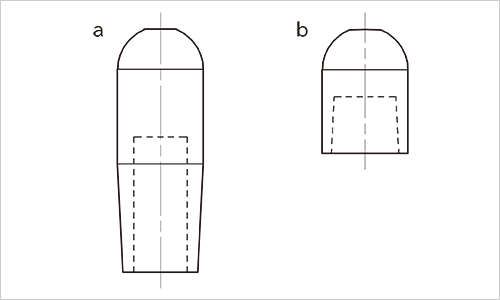
Note: Integral electrode and cap type electrode.
Offset electrode
Electrode whose contact surface is not concentric shaft with electrode adapter’s for spot welding or stitch welding. It is also called eccentric electrode.
Electrode adapter
Holding device for cap electrode by a male taper or a female taper.
Electrode holder
Holding tool for electrode tip. It is also called electrode tip holder or holder simply.
Throat(-for lap resistance welding)
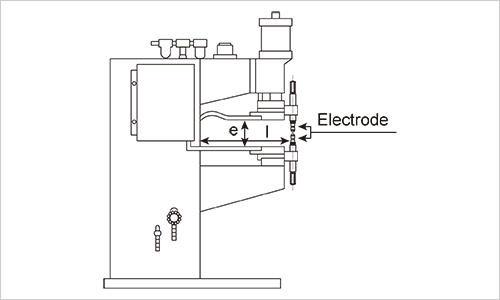
In case of spot welding
Note: This space is provided by throat opening e and depth l. (Refer to JIS C 9305)
Welding pressurization
Adding electrode force during welding. It is also called welding force. (Refer to Fig.2)
Welding current
Current to form a welding part. (Refer to Fig.2)
Electrode force time
Time adding welding force, or time after a welding force begins to add until a forging pressure starts. (Refer to Fig.2)
Welding pressure loading time
Time a welding pressure by an electrode applies to a material to be welded during a welding cycle. (Refer to Fig.2)
Initial pressurization time
Time after a command signal of electrode pressurization is sent until a welding current begins to flow in lap resistance welding. It is also called squeeze time. (Refer to Fig.2)
Weld time
Time when a welding current runs in resistance welding. It is also called weld time. (Refer to Fig.2)
Note: It is also called individual weld time in multiple-impulse welding.
It is called entire weld time in single-impulse welding.
Hold time
Time after a welding current flows until an electrode is started to be open in lap resistance welding. It is also called hold time. (Refer to Fig.2)
Off time (An electrode is released)
Time between two continuous welding cycles. Setting interval time when an electrode is away from an object to be welded. It is also called off time. (Refer to Fig.2)
Current off time
Time after a welding cycle energization stop until next one starts.
Welding cycle
Continuous operation of a welding machine for an electrode to return to the original position after welding.
Welding cycle time
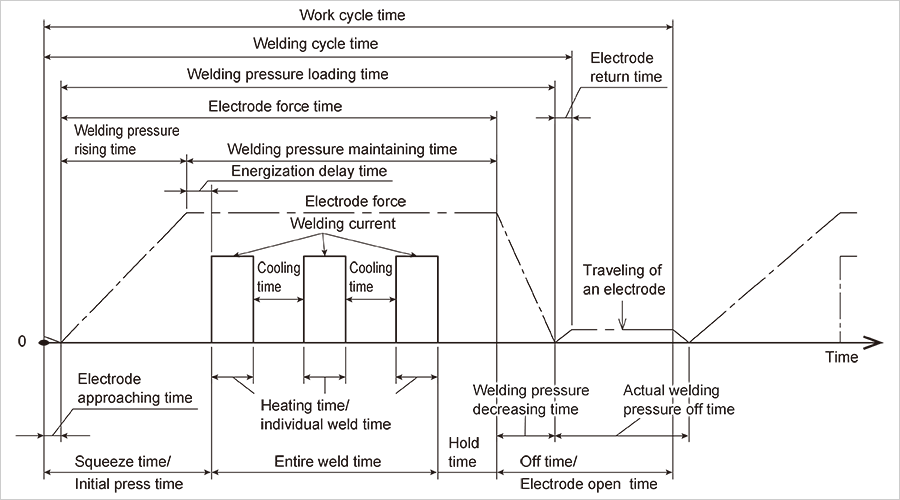
Fig.2-Example of spot welding sequence and each name
Example of constant welding pressure settings
Electrode force
Force applied between electrodes or between electrode and base material in lap resistance welding.
Electrode stroke
Physical moving amount of an electrode on an electrode shaft during a welding work.
Work stroke
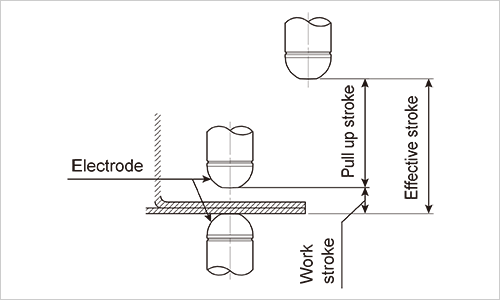
Effective stroke
A total value of pull up stroke and work stroke.
Welding count interval
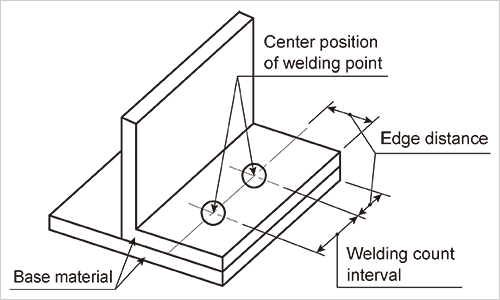
Lifetime of electrodes
Seam welding length, or the possible number of times of spot welding by using same electrode until it is necessary to reform or change the electrode.
Electrode dressing
Machining for correcting deformation of a tip of an electrode and removing pickup caused at a surface of an electrode in lap resistance welding.
It is also called dressing simply.
Shunt current
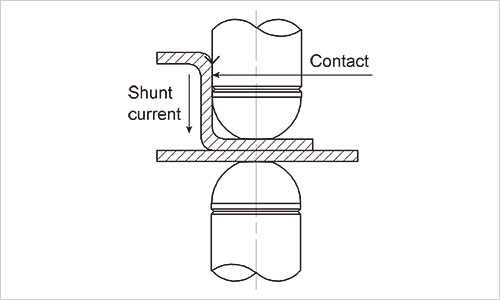
Note: There are 2 ways of shunt current. One occurs when a material to be welded comes into contact with an electrode holder or a side face electrode, another occurs by structure of member or existing welding point inevitably. The former has to be prevented.
Expulsion
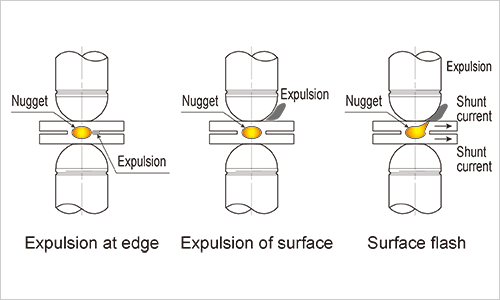
Note: There are 3 ways of expulsion. First one is expulsion of surface which occurs to the outside surface of a base material and an electrode tip. Second one is expulsion at edge which occurs between base materials. The last one is surface flash (occurs to series spot welding) to scatter metal of the inside of a nugget to the surface.
Welding current meter(-for resistance welding)
The device displays, records, and measures a current value of short time energization like resistance welding current.
Note: Generally, Toroidal coil and Hall element are used as a current detection censor.
Electrode force meter(-for resistance welding)
The device measures a welding force that is imparted to a resistance welding part.
Note: There are devices that can measure a electrode force change during energization, most of those measures it without energization.
Welding condition monitor
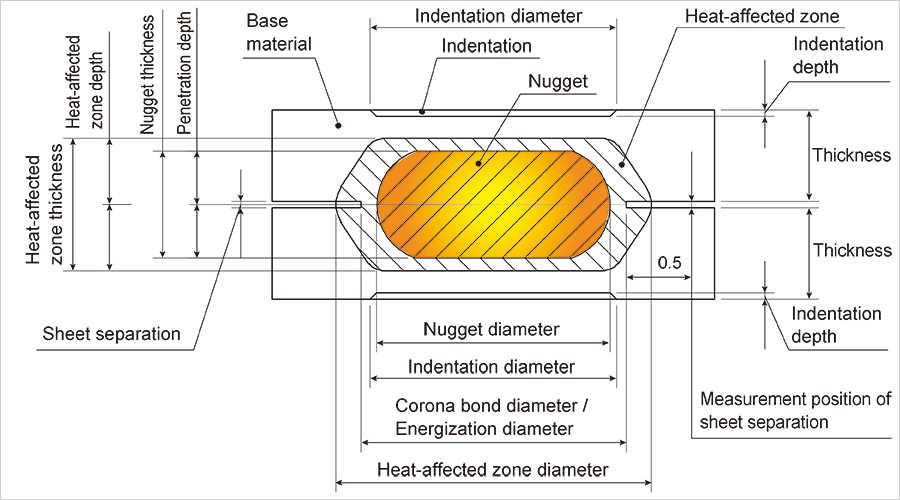
Fig.5- Each part name of lap resistance welding part (Example of spot welding)
Nugget
A molten-clotted part occurs at a welding part in lap resistance welding. (Refer to Fig.5)
Nugget diameter
Nugget diameter measured at the junction interface by a section test of a projection welding part or a spot welding part. (Refer to Fig.5)
Corona bond
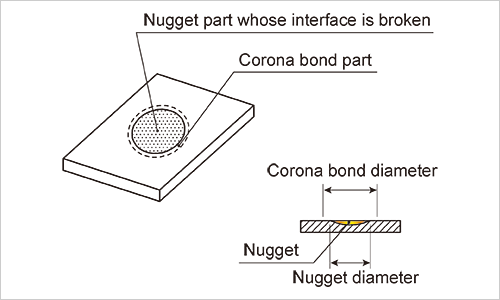
Fig.7-Definition of welding diameter at the interface break part and Corona bond diameter
Corona bond diameter
Average diameter of Corona bond part. (Refer to Fig.5)
Indentation
Dent of the surface of a base material occurs by an electrode and a disc electrode in lap resistance welding, as the result of welding. It is also called a dent. (Refer to Fig.5)
Indentation diameter
Average diameter of a dent part by an electrode (Refer to Fig.5)
It is also called an electrode indentation diameter or a dent diameter. (See JIS Z 3139 about measurement method)
Note: Indentation is called also electrode indentation and dent. (Refer to JIS Z 3139)
To define an indentation depth as the depth from a face formed between positions of a double size of indentation diameter in JIS Z 3139.
Chisel test
To measure a welding diameter or to determine the strength of welding part, a tensile force is made to act to a thickness direction of a welding part by striking a hammer to insert a chisel between boards which are near a welding part or force fitting.
Test: (See JIS Z 3144 about test method)
Note: Non-fracture type chisel test is the method to determine whether the deformability of a welding part is satisfied with a demand without fracturing a welding part. Fracture type chisel test is the method to measure a welding diameter by fracturing the welding part.
